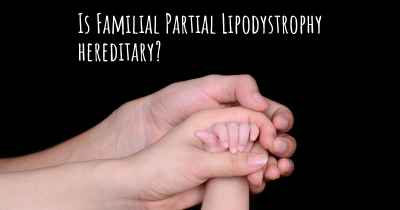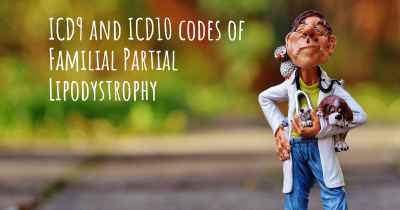What is the history of Familial Partial Lipodystrophy?
When was Familial Partial Lipodystrophy discovered? What is the story of this discovery? Was it coincidence or not?

Familial Partial Lipodystrophy (FPL) is a rare genetic disorder characterized by the abnormal distribution of body fat. It is also known as Dunnigan-type lipodystrophy or adipose tissue dystrophy. FPL is inherited in an autosomal dominant manner, meaning that an affected individual has a 50% chance of passing the condition on to each of their children.
Discovery and Early Cases:
The first documented case of Familial Partial Lipodystrophy was reported in 1940 by Dr. Cecil J. Dunnigan, an Irish physician. He described a family with a unique pattern of fat loss, primarily affecting the limbs and trunk, while sparing the face, neck, and buttocks. This discovery led to the condition being named after him.
Genetic Mutations:
FPL is primarily caused by mutations in the LMNA gene, which provides instructions for producing a protein called lamin A/C. Lamin A/C is involved in maintaining the structure and function of the cell nucleus. Mutations in the LMNA gene disrupt the normal processing of lamin A/C, leading to the characteristic features of FPL.
Clinical Features:
Individuals with Familial Partial Lipodystrophy typically develop symptoms during late childhood or adolescence. The loss of subcutaneous fat in the limbs and trunk is often accompanied by an abnormal accumulation of fat in other areas, such as the face, neck, and intra-abdominal region. This creates a distinct body shape, with a thin appearance in the arms and legs and a more normal or even overweight appearance in other areas.
Other common features of FPL include:
- Metabolic Abnormalities: Many individuals with FPL experience metabolic complications, such as insulin resistance, diabetes mellitus, hypertriglyceridemia, and fatty liver disease. These metabolic abnormalities can increase the risk of cardiovascular disease.
- Acromegaloid Features: Some individuals may develop acromegaloid features, including enlarged hands, feet, and facial features.
- Polycystic Ovary Syndrome (PCOS): Females with FPL often exhibit symptoms of PCOS, such as irregular menstrual cycles, infertility, and excessive hair growth.
- Renal Involvement: In rare cases, FPL can lead to kidney abnormalities, including proteinuria and renal failure.
Diagnosis and Management:
Diagnosing Familial Partial Lipodystrophy involves a combination of clinical evaluation, family history analysis, and genetic testing. The identification of LMNA gene mutations confirms the diagnosis.
Management of FPL focuses on treating the associated metabolic complications and minimizing the risk of cardiovascular disease. This often includes lifestyle modifications, such as a healthy diet, regular exercise, and weight management. Medications may be prescribed to control blood sugar levels, triglycerides, and other metabolic parameters.
Research and Future Directions:
Advancements in genetic research have improved our understanding of Familial Partial Lipodystrophy. Scientists continue to investigate the underlying mechanisms of the condition and explore potential therapeutic approaches.
Recent studies have highlighted the role of adipose tissue dysfunction and its impact on metabolic homeostasis. Targeted therapies aimed at restoring or modulating adipose tissue function are being explored, including the use of leptin replacement therapy in certain cases.
As research progresses, it is hoped that further insights into the pathogenesis of FPL will lead to more effective treatments and improved outcomes for individuals living with this rare genetic disorder.








